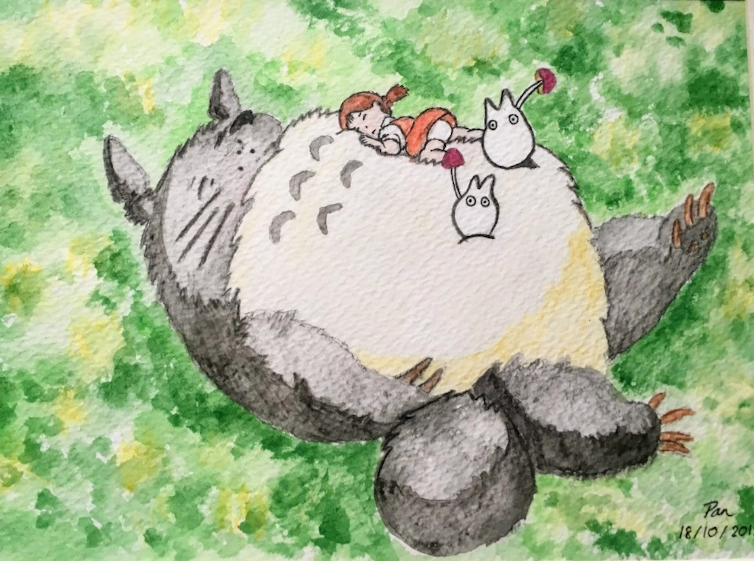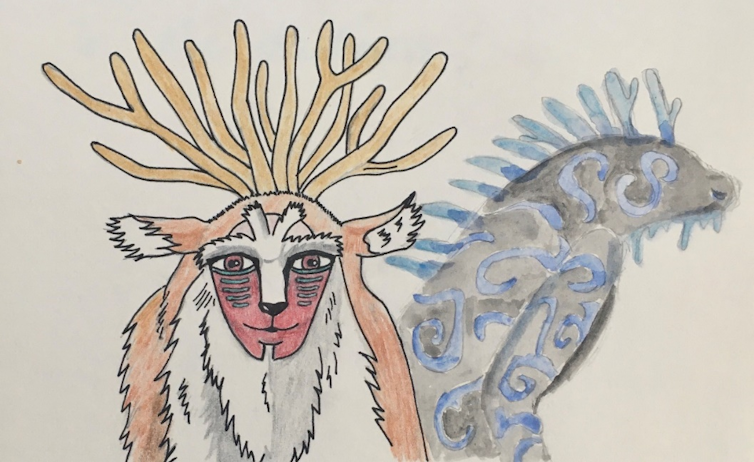
How Studio Ghibli films can help us rediscover the childlike wonder of our connection with nature
Films like Princess Mononoke, My Neighbour Totoro and Nausicaä created by Hayao Miyazaki explore the perils of neglecting nature.
April 29, 2022 • 6 min • Source
Films with powerful environmentally-centred narratives can transform our thinking and connect us with nature in ways that scientific papers cannot. For example, Studio Ghibli , a renowned Japanese film studio co-founded by animator Hayao Miyazaki , creates complex visual stories about human-nature relationships that transcend barriers of culture or age. A key message of Miyazaki’s work is that we must respect nature – or face our own destruction.
Miyazaki’s films offer viewers moments of escape into fantastical worlds that nonetheless echo problems of modernity, demonstrating that it’s possible to portray complex environmental issues through animation in a way that retains mainstream appeal. As a conservation scientist and Studio Ghibli enthusiast, I’ve analysed the environmental themes in three of its most well-known films: Nausicaä of the Valley of the Wind (1984), My Neighbour Totoro (1988) and Princess Mononoke (1997).
Nausicaä
Nausicaä, released with a special recommendation from the World Wildlife Fund for Nature, tells the story of an apocalyptic event that wreaks havoc on global ecosystems. Surviving humans must coexist alongside the Toxic Jungle , a dangerous landscape filled with poisonous fungal spores. Most humans fear the Toxic Jungle and seek to destroy it. But what they don’t understand that it’s cleansing the environment for their benefit.
Miyazaki designed the film to mirror our society, where prioritising short-term materialistic growth over long-term environmental sustainability is predicted to lead to collapse. The film reminds us that being at war with nature ultimately ends in our demise . To create a sustainable future, we must work with nature rather than against it.
My Neighbour Totoro
In My Neighbour Totoro , a pair of young sisters move to a house in the countryside with their father as their mother recovers from illness. The girls explore their new house and the surrounding forest, forming a friendship with a large forest spirit named Totoro.

During UK lockdowns , local green spaces became a haven supporting my mental health and reminding me of my intrinsic connection to nature and to other humans. As I saw children spending more time playing on the grass or climbing trees, I realised the importance of unstructured playtime in nature. Indeed, a growing body of research suggests that children’s interactions with the natural world are invaluable for their wellbeing.
In Miyazaki’s film, the young sisters become friends with Totoro, explore their surroundings, and discover their affinity for their environment. Totoro is depicted as a warm and nurturing mother figure, representing and encouraging the healing effects of communing with nature: which have been well-documented in research and culture.
Princess Mononoke
Princess Mononoke is set in 14th-century Japan , a world where the constant battle between humans and forest kami (spirits) leads to casualties on both sides. In Shinto , a traditional Japanese religion, these kami are part of nature – but they’re not soft-natured entities. When humans refuse to respect their environment, they can seek revenge.
The film’s most powerful kami is the Forest Spirit ( Shishigami ), who is neither good nor evil but represents the pure power of nature. During the day, Shishigami appears as a deer. At night, it transforms into the eerie Night Walker. This transformation represents the duality of nature as a bringer of life and death, echoing how the natural world has the ability to both support and destroy humankind.

Similarly, the antagonist of the film, Lady Eboshi, isn’t in fact a clear-cut villain. Although she wants to cut down the forest to feed iron mines, she’s also the kind, generous leader of Iron Town, providing a haven for social outcasts and espousing gender equality. Yet despite her wish to build a better society, her actions – however well-intentioned – will destroy the forest and the homes of the kami.
This situation is a microcosm of ongoing environmental justice issues across the world, where poor and marginalised groups, including Indigenous people and women , suffer for the actions of the wealthy. In particular, although wealthy countries contribute the most to climate change, it’s poorer countries that must carry the greatest climate-related burdens .
As viewers of Princess Mononoke, we’re being encouraged to move beyond dichotomies of “us versus them”, thinking which allows groups with more power to distance themselves from those without: or even to dehumanise them altogether. Miyazaki’s work is a lesson in seeking intrinsic commonalities – what connects us rather than what divides – and using these to imagine fairer, more equal societies that live in harmony with nature.
Yuan Pan does not work for, consult, own shares in or receive funding from any company or organisation that would benefit from this article, and has disclosed no relevant affiliations beyond their academic appointment.


